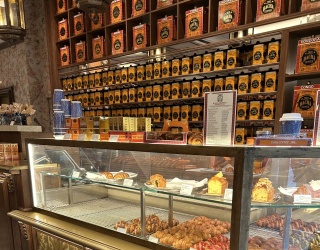The use of ice in food retail already enjoys a long tradition. Today, the cooled mass, and more accurately slurry ice, experiences somewhat of a renaissance in cooling technology. The reason for this is also the F-gas Regulation that went into effect in January 2015 and restricts or fully bans the use of hazardous refrigerants. This means food retailers need to change over to environmentally friendly cooling systems.
Slurry ice cooling systems could present the key alternative in this case since they forego climate-changing cooling agents that have a potentially damaging effect on climate. “The basic material for slurry ice is a mixture of water and a freezing point depressant material such as ethanol, glycol or salt, “explains Michael Kauffeld, Professor at the Institute of Refrigeration, Air Conditioning and Environmental Engineering at the Karlsruhe University of Applied Sciences.
Slurry ice is produced in a so-called scraper blade evaporator that works similar to a slush machine, Kauffeld adds. Ice particles are scraped off on the inside surface of a cylinder that is cooled from outside with cooling agents. A pump then moves the ice particles into a container. “The higher the percentage of ice, the more cooling energy can be transported with the liquid ice. It is relatively easy to store large amounts of cooling energy if the ice is kept in a container“.

Slurry ice is gentle on the environment
Traditionally, supermarkets use direct evaporative cooling systems. These contain R404A refrigerant, which significantly contributes to global warming at 3900 GWP (global warming potential). The already effective F-gas Regulation bans the use of refrigerants with high global warming potential of 150 or more starting in 2020. This affects thousands of supermarket cooling systems.
Kauffeld adds, “Natural refrigerants with near zero global warming potential are much better; those refrigerants being ammonia, propane or CO2. The latter is also the coolant that is by now favored by the food retail industry – at least by major equipment manufacturers. We use a combination of propane, slurry ice, and CO2 at our university cafeteria. The propane cooling system generates the slurry ice. It is pumped through the building and cools the intended food items. Small decentralized CO2 cooling systems are also used for low-temperature cooling. They release their heat to the slurry ice cycle“.
High level of financial commitment with quick amortization
The switch to a slurry ice-based cooling system is a good alternative for food retailers, but not just from a sustainability perspective. The expert knows, “The piping system would need to be completely updated during a remodel. The refrigeration units and heat exchangers can be reused in part. You only need to replace the expansion valve“. He adds that due to the high level of energy density of slurry ice (compared to a liquid refrigerant), merely one-eighth of the cooling mass needs to be pumped through the cooling system. As a result, pipes and pumps will decrease in size and subsequently so does energy consumption.
Even though the costs of newly acquiring slurry ice-based cooling systems are generally between 40 and 45 percent higher than the cost of conventional direct evaporation systems, the purchase can be quickly amortized with the right electricity plan. “The major advantage of slurry ice is that the cooling system of a supermarket is also able to run at night. This mostly makes ecological sense since the ice can be produced while ambient temperatures are lower. The slurry ice is then fed into the cooling system the next day, “says Kauffeld. What’s more, the likelihood of leaks is significantly lower than with direct evaporation systems. There is no need for additional safety installations and refrigerant leak detection sensors.

Slurry ice in the convenience food sector
The cooled mixture is not just being used in cooling systems. Canada in particular uses slurry ice in areas for convenience foods. To present products as fresh as possible, Canadian grocers generally prefer to place them on flake ice. A popular method that can frequently also be seen at fish counters in Germany.
However, the drawback of flake ice is that it requires strong associates to fill the counters and displays in the morning and empty them out again at night. That’s why one Canadian company has developed a slurry ice-based system where a large hose pumps the slurry ice into the displays. The water-salt mixture runs off through a drain, leaving behind pellets in which the products are placed. What’s more, in direct contact, slurry ice cools faster and more gently than flake ice, thereby eliminating the risk of damage to food from sharp edges.
A laboratory-scale ice generator
Liquid ice is a high efficiency, environmentally friendly coolant because no hazardous waste products or harmful substances are being produced. That’s why the number of slurry ice-based cooling systems will continue to rise over the next few years, not least due to the F-gas Regulation. For the use of this technology to expand, it would presently take a more efficient and cost-effective ice generator. Having said that, the researchers at the Institute of Refrigeration, Air Conditioning and Environmental Engineering already developed a laboratory-scale ice generator. The implementation of an industrial prototype is also already said to be in the planning stages.









